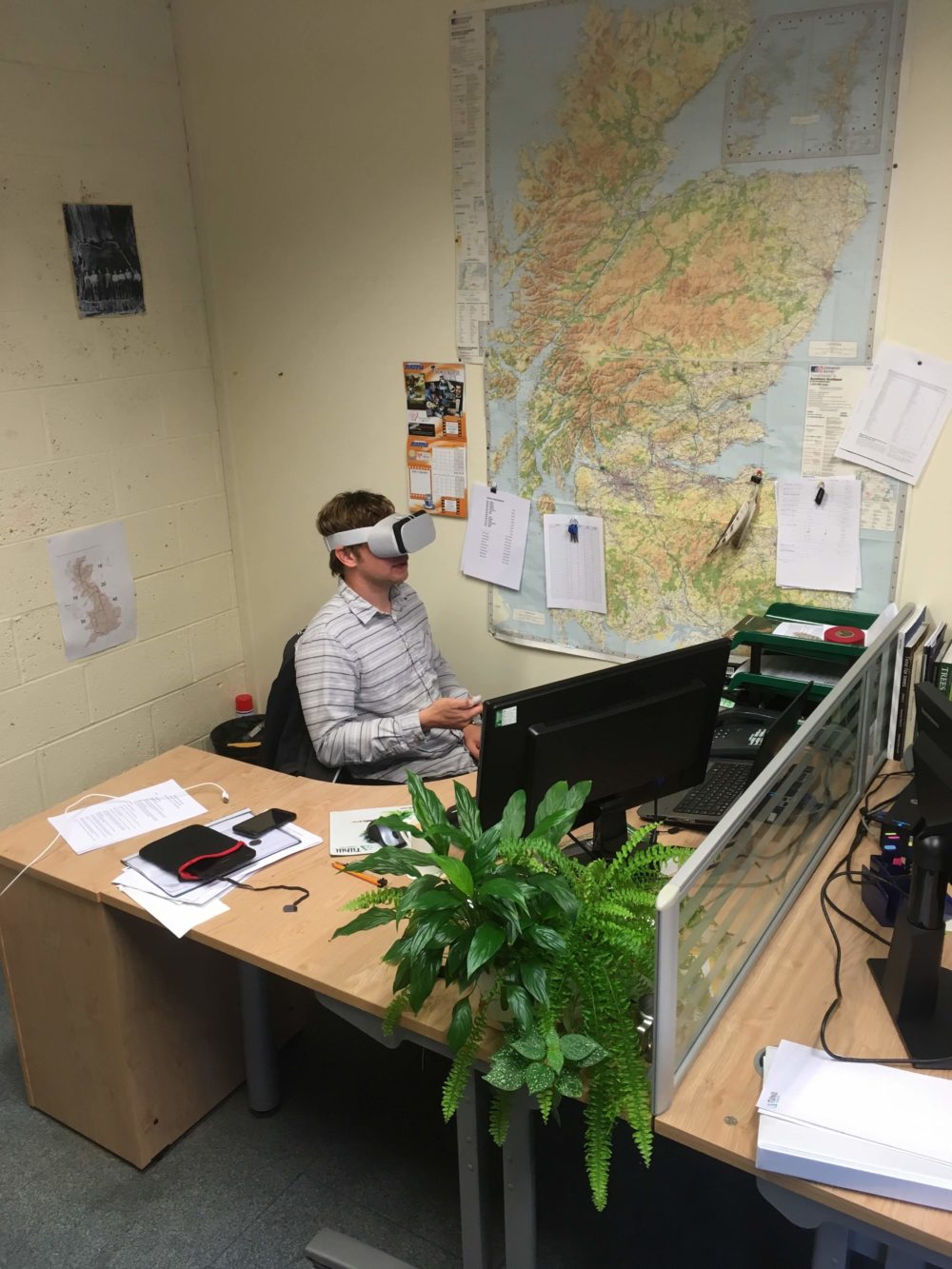Harvesting Technicalities – Technology
Update on Use of Technology
Jamie Adcock joined our Central Scotland District office based in Dunblane in July 2016, having completed the BSc Honours Forestry course at Bangor University.
He had previously worked for five years as a ski instructor in Banff, Canada, and Wanaka, New Zealand, and so was starting his forestry career a little later than normal.
Of all the graduates recruited to the District, it was immediately apparent that Jamie was already competent and familiar with the use of technology, especially ArcGIS mapping. One of Jamie’s first tasks was to take charge of refreshing and updating the Team’s content on the Tilhill Forestry intranet.
The District were host to an UKWAS auditor who had started to use a tablet to record audits. Jamie quickly identified opportunities to improve the software and functionality of the tablet. This led to him developing the ‘Central Scotland Notebook’ (which is stored securely on the Cloud and available to all managers in the field via their phones and tablets). The Notebook provides key functional district information such as all the District padlock codes and important maps. Being Cloud based also meant there were no version control issues as all manager’s access and maintain the data using the one file.
The District then started road-testing different tablets and trialling the use of other essential company processes and systems on Cloud based software, also GPS mapping apps and open-source GIS software. The four managers who trialled the technology immediately reported that it brought a step change to their work, allowing easy access to significant company documents, processes and mapping data in the field, and therefore increased their efficiency and effectiveness.
“Better use of modern technology” was one of the key issues identified in a recent staff survey, and with the testing work already complete, the tablet technology has now been quickly rolled out across the company. Over time, the company processes will be improved and refined further, so that the tablet functionality will be seamless, making available the essential data, applications and evidence gathering tools required for our managers. Jamie will be a key part of this ongoing process.
Other benefits of technology include the use of Unmanned Aerial Vehicles (drones) to capture aerial photo images. This technique is rapidly increasing, as is use of Lidar (Light Detection and Ranging) and digital terrain and crop modelling. Whilst still in its infancy, these technologies will further revolutionise our industry (and society) provided we can cost-effectively harness their functionality.
In practice, this currently means that we can already access up-to-date satellite imagery at our desks, and as data capture and interpretation techniques improve, we will (eventually) have access to accurate forest, stand and tree condition and measurement data. Coupled with RTFI (Real Time Forest Information) calibrated harvesters, we will have the ability to accurately record and track individual trees from sapling to sawmill.
“We are stuck with technology when what we really want is just stuff that works” quoted Douglas Adams and, of course, technology is only as good as its functional use to the person deploying it. Therefore, as well as proper road-testing to identify functionality, provision of training in the use of the selected technology is an important factor to harness our range of abilities and effectiveness.
Indeed, this was the theme of Jamie’s winning ‘Dragon’s Den’ presentation to the Board as part of his graduate development training (Unlocking Potential). Our next step is to develop effective training resources to maximise the benefits of technology and make these available on the company intranet.



